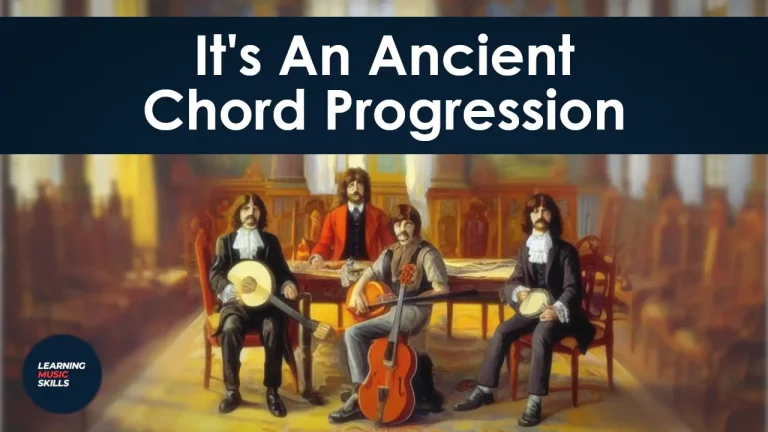Ever wondered why some chord progressions just sound so good? Are you looking to have full control over your chord progressions? Then let’s dive into what chord tones are most important!

The free tutorials and articles from Learning
What if I tell you that the chords in your chord progression are not the only thing that is important? The notes that you accentuate are just as important. When you know what are the most important chord notes, then you know how to get the sound that you like.
So what are the most important notes or tones in your chord and chord progression? In short, the top notes and the bottom notes are the most important. Let’s find out why this is.
Video Tutorial: The Most Important Chord Tones In Your Chord Progressions
If you want to hear all these examples with real
The Spacing and Stacking of The Chordal Tones
How your notes are ordered and how far apart they are is important. When you play a B major chord. Do you stack your notes like B-D#-F# or do you stack them B-F#-D#?


I always like to divide my chords into two parts. The bottom part provides the foundation of your chords and the top notes give your chords their extra character.
The Lower Part of The Chord
To start, only play the root note and the fifth of your chord. Do this with all of your chords in your chord progression.

The lower you play the perfect fifth interval the fuller the sound gets. And if you want a fuller sound or want to add more body, then you can double the root note an octave higher or lower. The last chord example above, we call a power chord on guitar.

Adding The Top Note In Your Progression
Now to add some colour to our chord progression we will add the 3rd note of the chord in the top voice. This means that the highest note will be a third. Of course what kind of third, depends on the chordal quality.
What are Chordal qualities?
All regular chords can either have the quality of:
- Major
- Minor
- Diminished
- Augmented
Major chords and Augmented chords have a major third and Minor and Diminished chords have a minor third. Augmented chords have an augmented fifth and Diminished chords have a diminished fifth.
In jazz, they call the third in your chords one of the guide notes. Guide tones are the third and the seventh in the chord. And I always like to say that the third in your chord defines the gender of your chords. Either major or Minor-oriented.
The Most Important Chord Tones
When I play a chord progression with only the bottom note and the top note then I basically have enough. Especially if the top note is always the 3rd of your chord. Just play the following chord progression.


Comparing Different Top Notes As Most Important Chord Tones
So are the top notes or highest tones really the most important chord tones? Well, try for yourself. Play these three chord progressions in a row. And play them exactly how it is written in the examples and see if the melody of your chord progression changes.
In chord progression No.1 the 5ths are the highest chord tones


In chord progression No.2 the octaves are the highest chord tones


Chord progression No.3 the 3rds are the highest chord tones


Conclusion
How do you identify chord tones? And when do you choose what note to play in your top voice?
You can identify chord tones because they are part of the basic triad or seventh chord. If they are the same then you know it’s right. And you can also learn to identify them by ear. Each interval has a sound quality to it. The 3rd sounds full and colourful, the 5th sounds open and stable and the octave sounds stable and final.
In my video on writing lead melodies without using scales, I show and play you how each interval sounds in a chordal context.
So with your next chord progression. Be aware of these most important chord tones and try to make some beautiful melodies with your chord progressions!
Your Support Matters
Support new videos by becoming a member and receive benefits in return. Or by giving a one-time donation! Help me provide free
https://www.buymeacoffee.com/musicskills
Suggested Video Tutorial:
The Easiest Arrangement Tip For Better Songs & Clean Mixes!









